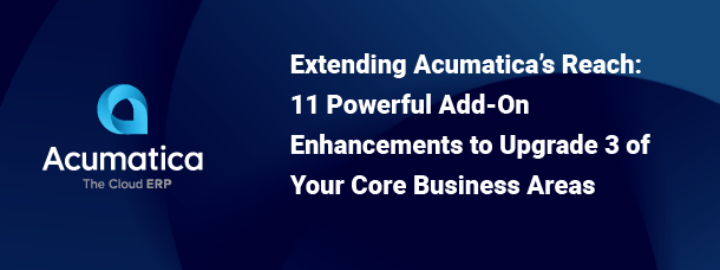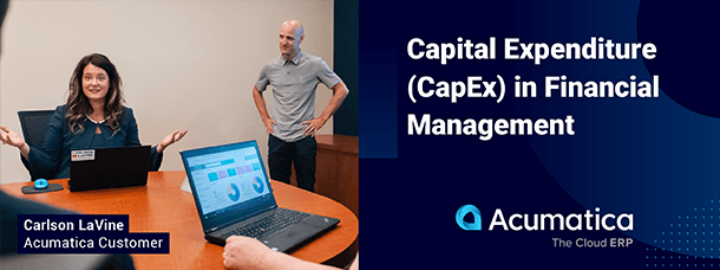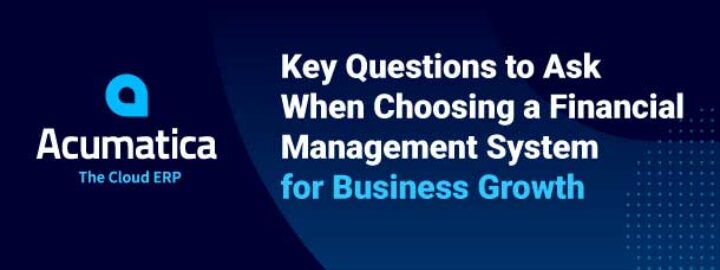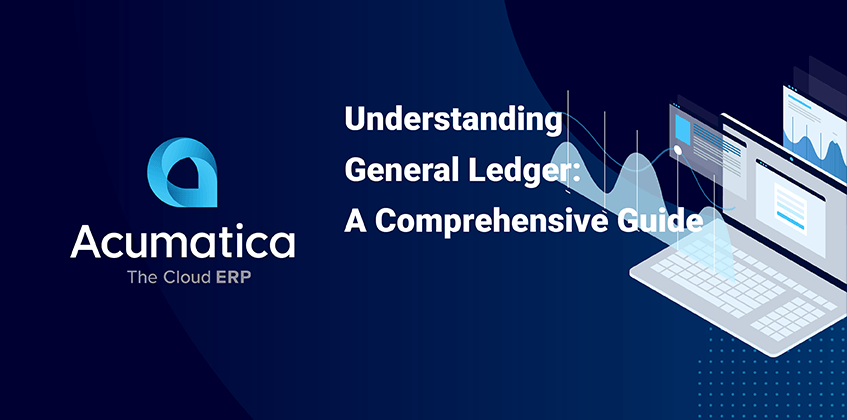
In this article:
The core of every business and the foundation of commerce is dealing with money—or financial management and accounting. You can’t run an organization without these, and the backbone of financial management and accounting is the general ledger. Simply put, the general ledger supports and connects every aspect of a business. Understanding its nuances helps businesses keep accurate records, build precise reports, and make informed financial decisions.
Today, we’ll explore the general ledger—filling knowledge gaps, clarifying common misconceptions, and discussing its connection with other financial statements.
What is a General Ledger?
A general ledger is the system of record for businesses’ financial data, which includes all accounts, account balances, and financial transactions—such as acquisitions, sales, payments, or receipts—over a period of time.
General ledger accounting has been around for thousands of years. In fact, according to TheStreet’s History of Accounting: Timeline, it dates as far back as 3300 B.C., with clay tablets from Egypt and Mesopotamia recording crop and herd growth to project surpluses and shortages.
Today, accounting processes are more complex. But, thanks to the Digital Age, modern technology—such as enterprise resource planning (ERP) systems with integrated accounting software—has simplified, streamlined, and automated historically tedious accounting tasks, including managing and storing all financial data in an intuitive general ledger.
With a general ledger, businesses have a detailed, accurate record of every financial transaction they make. They’re able to glean deep insights into the company’s overall financial health (e.g., cash flow, liabilities, debts, profitability, errors, and fraud) and make data-driven decisions. And they also have easy access to the information they need to create critical financial statements, file taxes, and adhere to regulatory requirements.
Five Major Divisions in a General Ledger
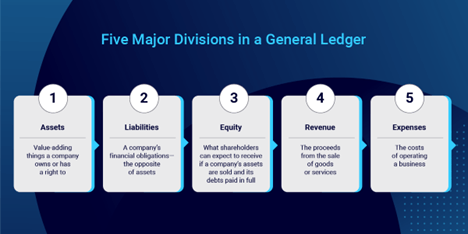
General ledgers are subdivided into five major sections.
- Assets
Assets are value-adding things a company owns or has a right to. A few examples include cash or cash equivalents, loans to other entities, inventory, equipment, buildings, investments, and patents. Assets are further divided into different categories (e.g., fixed, financial, intangible, current, and noncurrent), and they are recorded as a positive on the company’s balance sheet.
- Liabilities
Liabilities are the opposite of assets. They are a company’s obligations, such as amounts owed to vendors and employees, revenues not yet earned and debt. Whether current or long-term, liabilities appear as a deficit on the balance sheet.
- Equity
Equity is what a company’s shareholders can expect to receive if the company’s assets are sold off and its liabilities are paid in full. Equity is a major indicator of how well or not so well a company is doing financially. This critical information is provided on a company’s balance sheet and gives analysts and investors a view of the company’s overall financial health.
- Revenue
Revenue is the proceeds from the sale of goods or services. Also known as sales or the top line, revenue does not account for the expenses—or costs—of producing the goods or services.
- Expenses
Expenses are the costs of operating a business. Expenses may be directly attributable to generation of revenue (production costs, like labor, materials, and production facility overhead) or be general in nature, such as rent, utilities, accounting, legal, and marketing costs. Each type of expense is noted on the company’s income statement in the category that best describes its nature: cost of sales, research and development or selling, general, and administrative expenses (SG&A).

Download General Ledger Product Sheet
Comparing General Ledger with Other Financial Statements
A company’s three core financial statements for assessing and reporting on its financial performance include balance sheets, income statements, and cash flow statements. All three are generated over a specific accounting period.
Balance sheets highlight a company’s assets, liabilities, and shareholder equity. Income statements reveal whether a company is producing a profit or loss during a fiscal quarter or fiscal year. They also unveil revenue, sales, and expense data. And cash flow statements summarize how much cash is moving into and out of the company, thus giving analysts and investors insights into how efficiently and effectively a business is managing its operating cash.
What do these vital financial statements have to do with a general ledger? Businesses tap into the financial data recorded in their general ledger to produce these statements.
In other words, a general ledger helps businesses assess their financial wellbeing, and in doing so, helps them develop a sound, profit-building business plan—which makes the general ledger a necessary—and powerful—financial tool.
Conclusion
Prior to the introduction of modern technology, businesses monitored and recorded their financial activity manually, making it a time-consuming, laborious, and often error-prone task. But accounting has been transformed into an automated, push-of-the-button process with the advent of cloud-based ERP solutions and sophisticated accounting software—like Acumatica. Using an ERP system offers significant advantages over relying on multiple disparate tools for tracking sales orders, inventory, and other business processes. One of the key benefits is the reduction of time spent by accounting professionals on reconciling data from various legacy systems. With an ERP system, data flows seamlessly between different modules, eliminating the need for manual data entry and reconciliation. This not only saves time but also reduces the risk of errors. Using Acumatica enables better decision-making and strategic planning. By centralizing data and automating processes, businesses are empowered to streamline their operations and achieve greater efficiency and accuracy in their financial management.
Acumatica’s customer-driven, all-in-one business management solution delivers advanced accounting, budgeting, financial management, and cash management capabilities. Its built-in, user-friendly General Ledger ERP Software—as the primary accounting record for any business—supports and maintains a company’s financial security, tracks every financial transaction, and supplies the information so critical for generating financial statements.
Key features of Acumatica’s General Ledger ERP Software include:
- Advanced Financial Reporting.
- Multiple Currency Support.
- GL Accounting Budgeting and Budget Approval.
- On-The-Fly Sub-Account Entry.
- Automatic Allocation of GL Balances.
- Recurring Transactions.
Implementing Acumatica and using these and Acumatica’s many other general ledger features has made life much easier for Sean Reuben, CFO, Incubeta Group. He says, “We could easily review general ledgers and access a lot more detail. I could dive into a legal entity and look at an account to see what was going on versus just seeing a trial balance and having to call and ask people for information.”
He also says, “Acumatica is flexible and allows you to do business the way you do.”
Explore Financial Management Solutions Explore General Ledger Solutions
 Canada (English)
Canada (English)
 Colombia
Colombia
 Caribbean and Puerto Rico
Caribbean and Puerto Rico
 Ecuador
Ecuador
 India
India
 Indonesia
Indonesia
 Ireland
Ireland
 Malaysia
Malaysia
 Mexico
Mexico
 Panama
Panama
 Peru
Peru
 Philippines
Philippines
 Singapore
Singapore
 South Africa
South Africa
 Sri Lanka
Sri Lanka
 Thailand
Thailand
 United Kingdom
United Kingdom
 United States
United States









